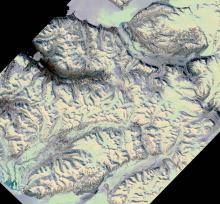Current Size: 76%
Influence of spring snow cover, food proximity and predators on the breeding of pink-footed geese
Summary
On Svalbard pink-footed geese nest in two contrasting but commonly found habitats: steep cliffs and open tundra slopes. A study was undertaken to compare nest densities and nesting success in these two environments, over ten breeding seasons, to assess the impact of spring snow cover, food availability for nesting adults and arctic fox abundance (as the main terrestrial predator).
In years with extensive spring snow cover, fewer geese at both colonies attempted to breed, possibly because snow cover limited pre-nesting feeding opportunities, leaving adults in poor breeding condition. Nesting success at the steep cliff colony was lower with extensive spring snow cover; such conditions force birds to commit to repeated and prolonged recess periods at far distant feeding areas, leaving nests open to predation. By contrast, nesting success at the open tundra slope was not affected by spring snow cover; even if birds were apparently in poor condition they could feed immediately adjacent to their nests and defend them from predators. Foxes were the main nest predator in the open tundra slopes but avian predators likely had a larger impact at the steep cliffs colony. Thus, the relative inaccessibility of the cliffs habitat may bring protection from foxes but also deprives geese from readily accessing feeding areas, with the best prospects for successful nesting in low spring snow cover years. The findings of this study indicate that spring snow cover, predator abundance and food proximity did not uniformly influence nesting success of this herbivore, and their effects were dependent on nesting habitat choice.
The study is described in an article published in Polar Biology and is available on-line.
A PDF copy is attached:
















